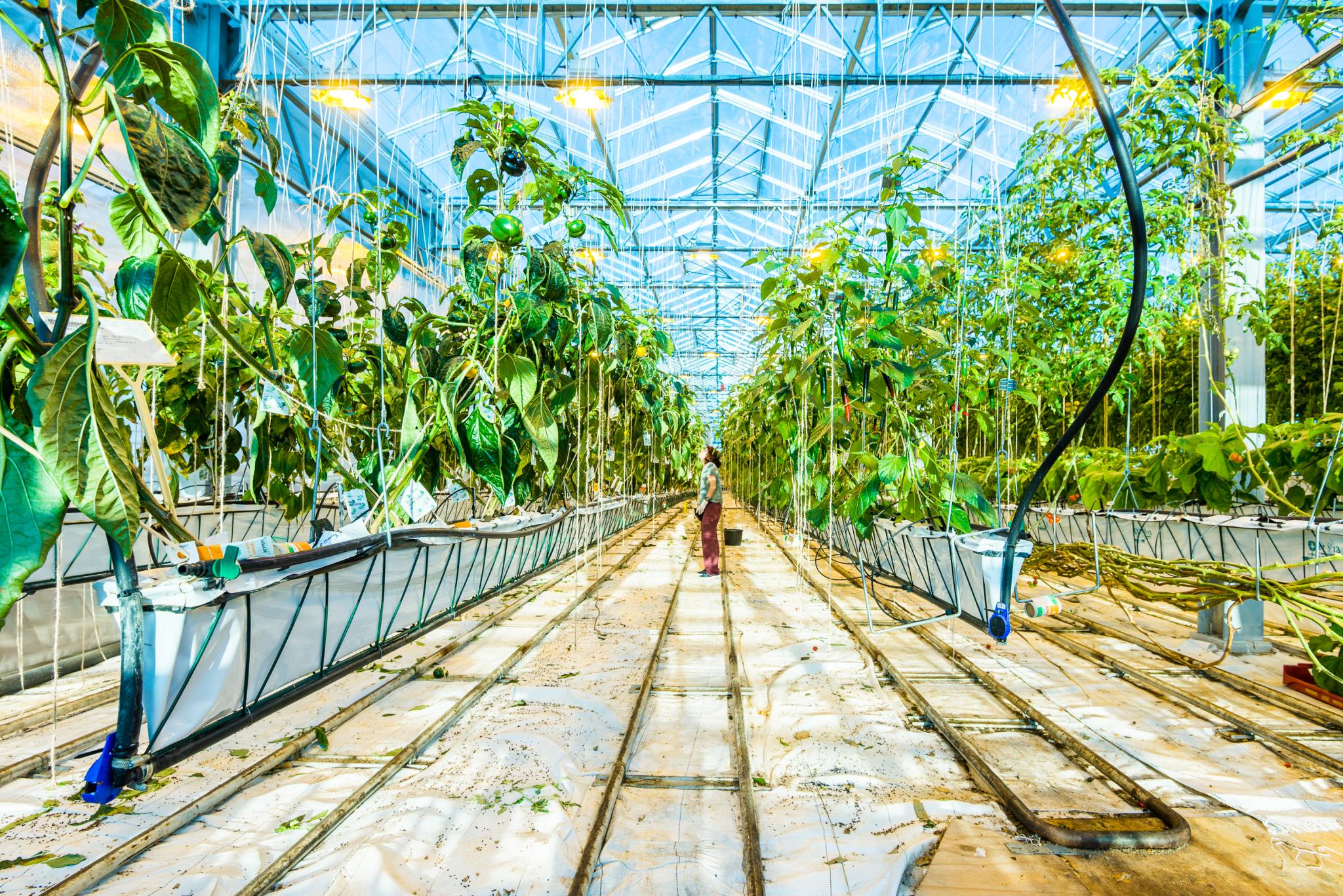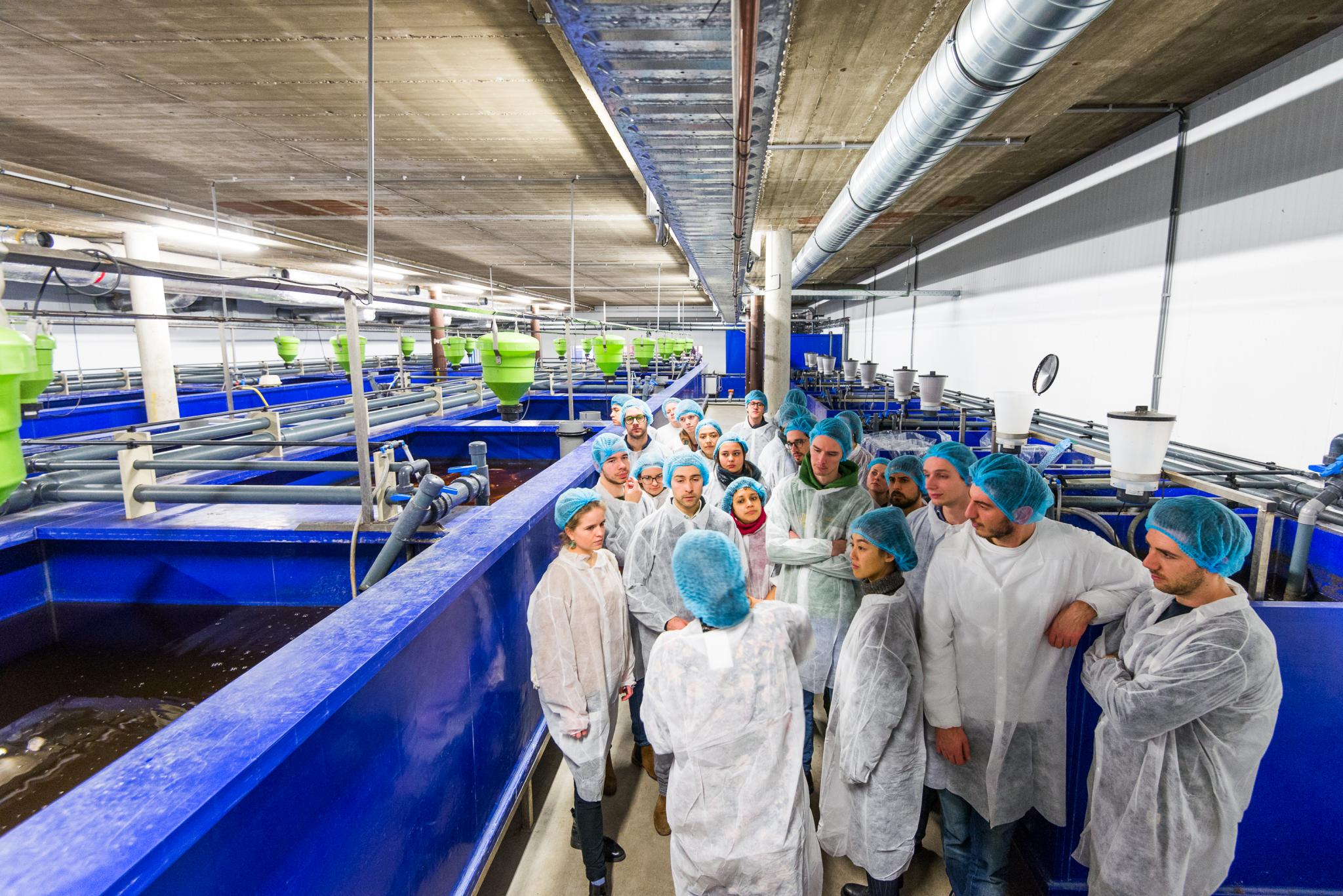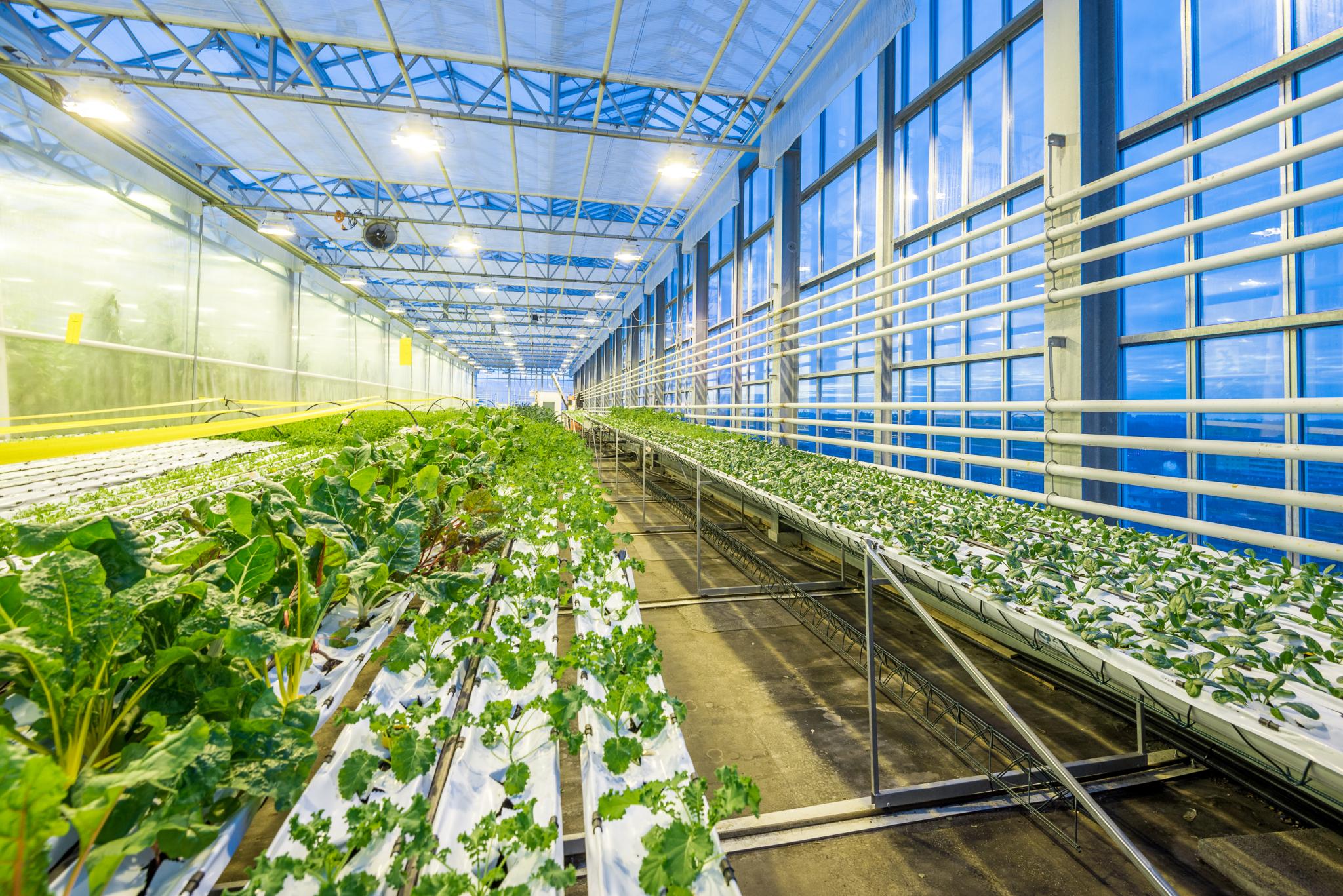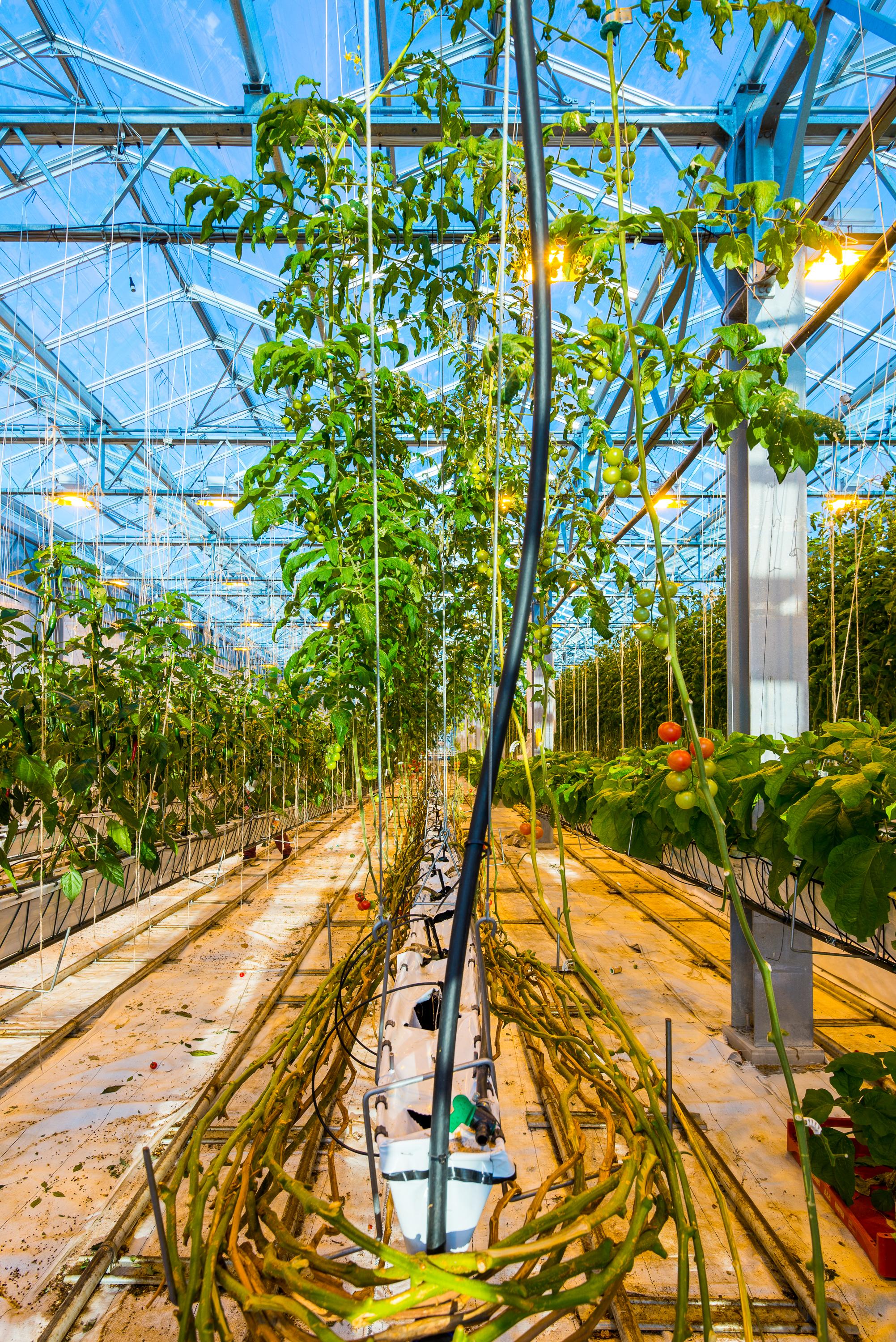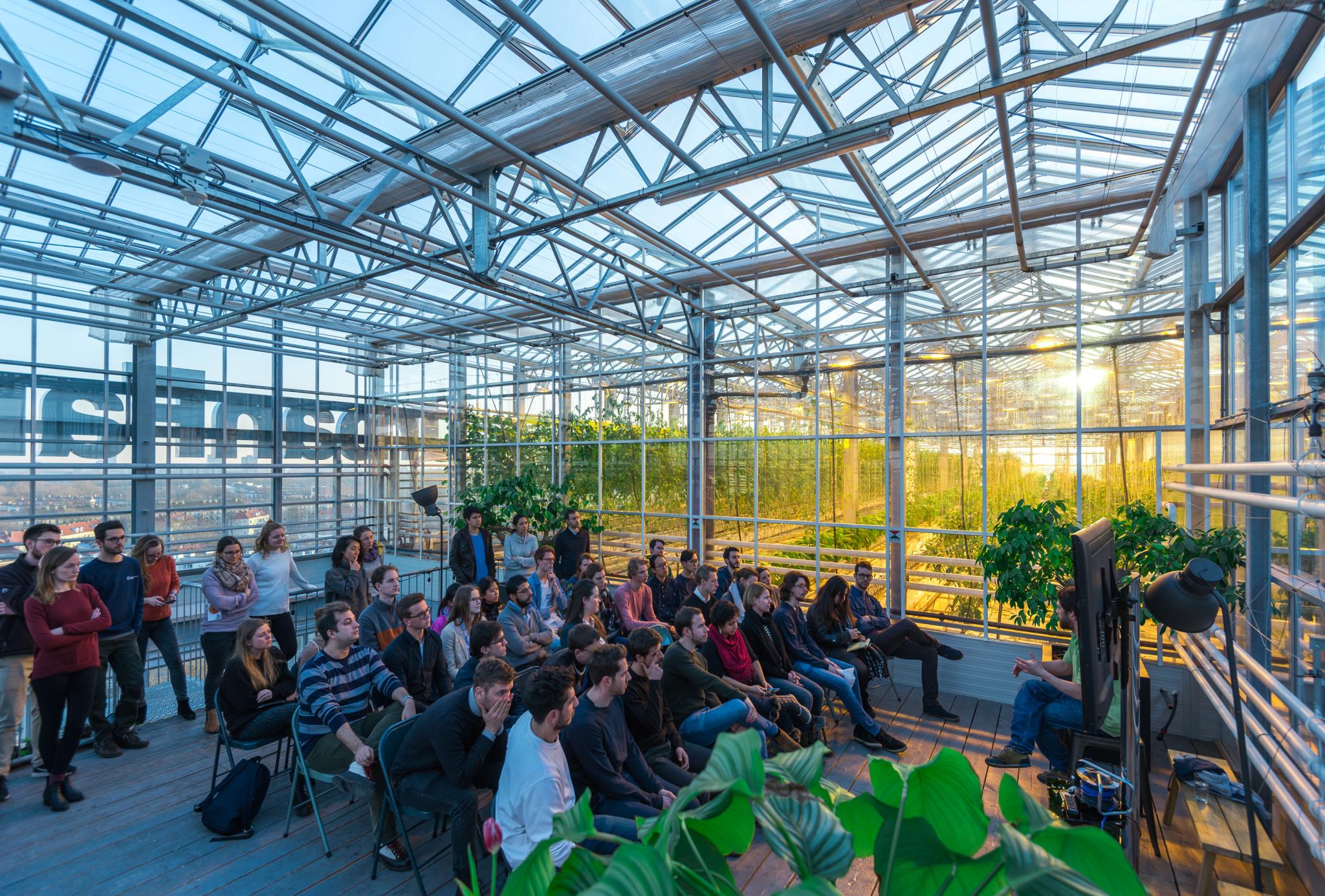Just outside the city centre of the Hague, perched atop the 6th floor of a building with a fantastic view of the city’s skyline, is the location of UrbanFarmers. This is the city’s first urban farm, where fish and vegetables are grown at a height of 34 metres above the ground. The student team of the Centre for Sustainability organised for a group of around fifty students to receive a guided tour of the facilities, on the 7th of February.
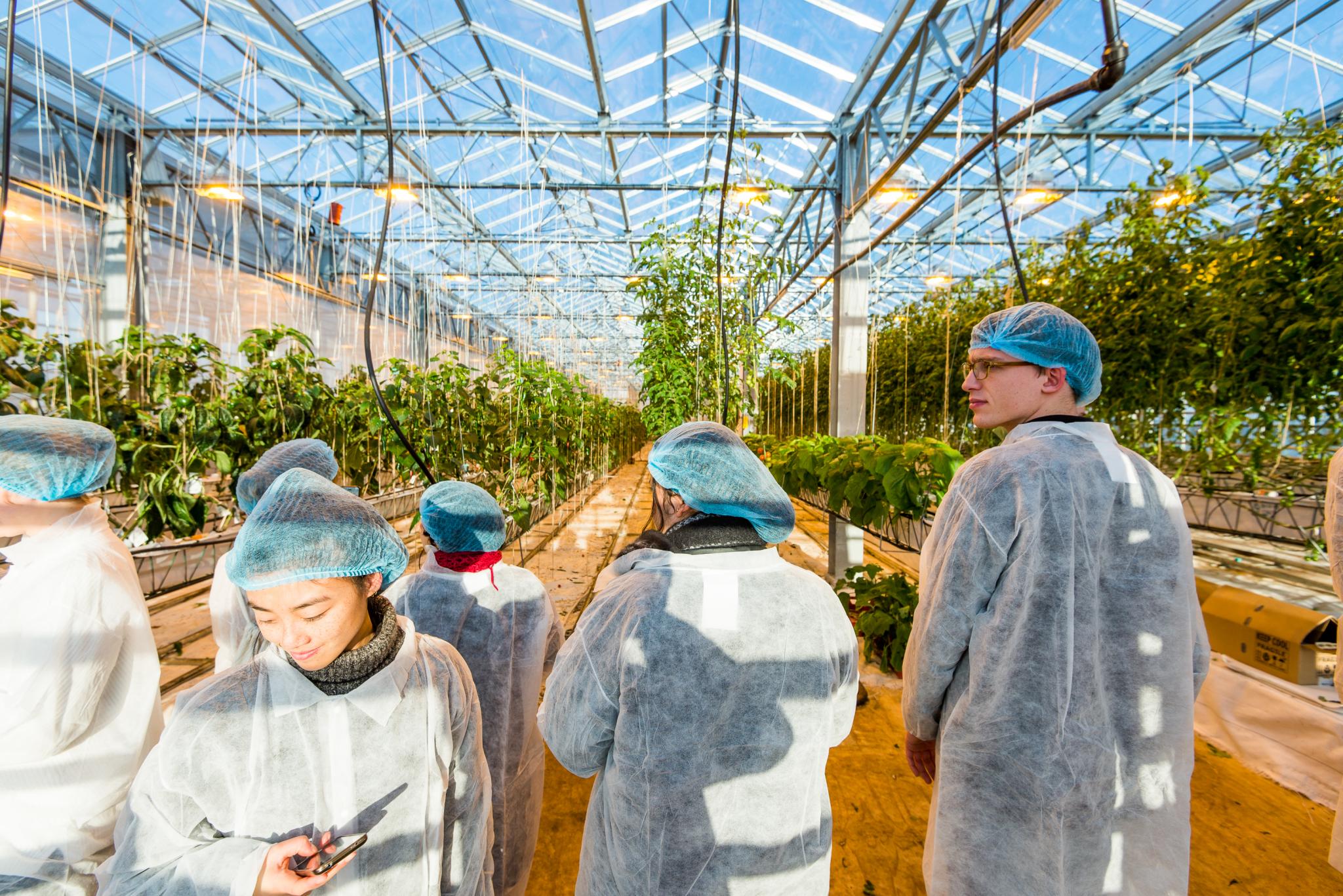
Before the tour commenced, the group was given a small introduction to the main goals of the organisation. These involve playing a leading role in the fight against food miles by growing produce right in the city where it is consumed, which reduces the carbon footprint of food. The process promotes responsible and sustainable farming through a combination of technology and manual efforts, by using a system of aquaponics, i.e. a combination of aquaculture and hydroponics. This creates a more efficient and connected system, and saves a significant amount of water by cycling resources between the farming of vegetable and fish.
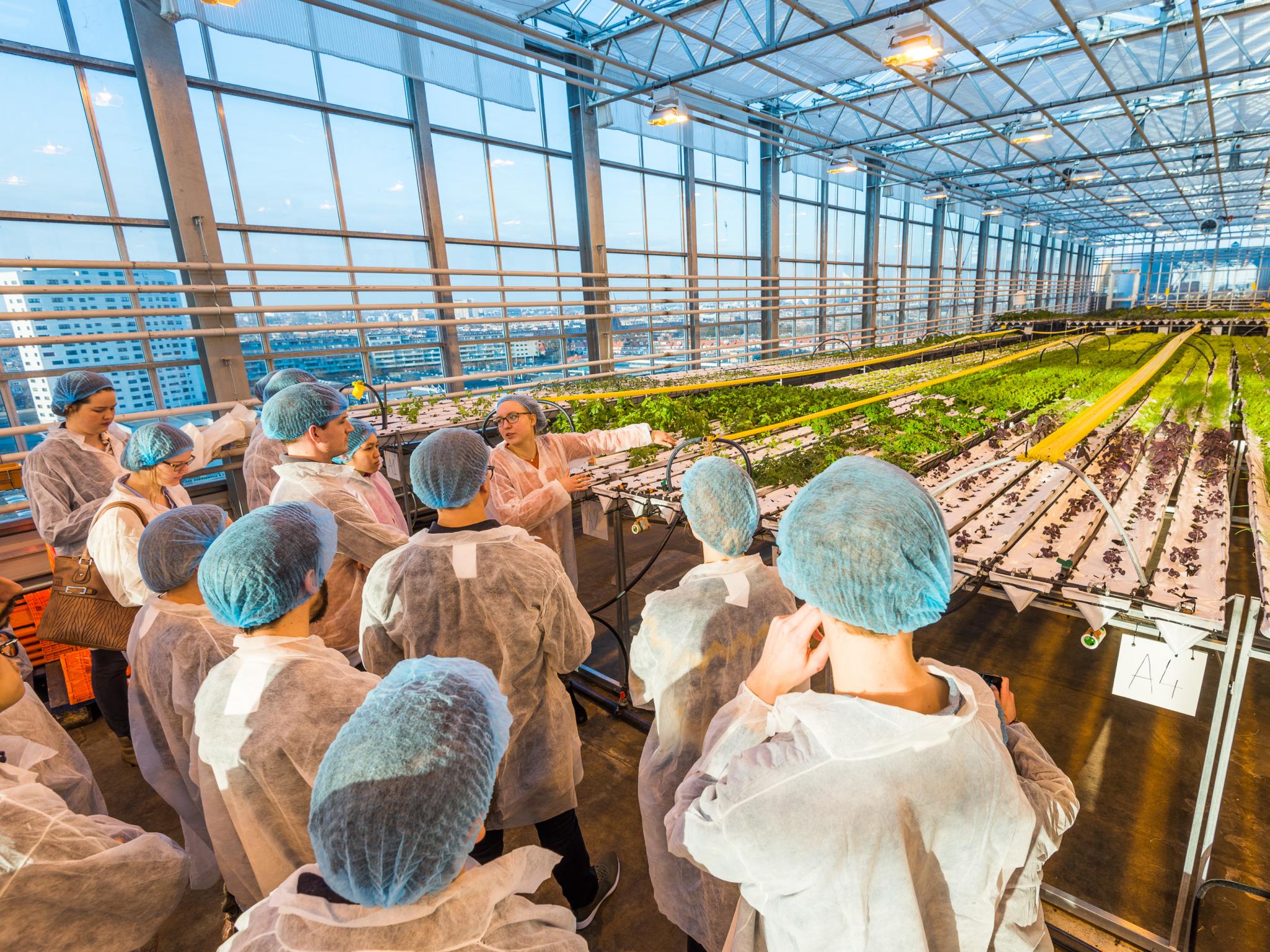 In preparation for the guided tour through the farming areas, everyone was requested to wear a hairnet and protective jacket. It was not to protect the participants from produce and the environment, but rather, to protect the environment from any contaminants that may have been brought in, as the entire enterprise is run without the use of chemicals and pesticides.
In preparation for the guided tour through the farming areas, everyone was requested to wear a hairnet and protective jacket. It was not to protect the participants from produce and the environment, but rather, to protect the environment from any contaminants that may have been brought in, as the entire enterprise is run without the use of chemicals and pesticides.
Once everyone had changed and wore identical blue hairnets, the groups proceeded from the chilly outside to the warm, temperature-regulated area on the rooftop glasshouse. Neat rows of plants spanned this area, with everything from small red tomatoes, colourful chilies and bell peppers, eggplants and more. The roof was separated into two sections with different temperatures. On one side, a bumblebee could occasionally be spotted buzzing around, and here we observed a worker carefully choosing and collecting the produce that was ripe enough to be harvested. We were told about the UrbanFarmers’ commitment to fresh food. Because of the short commute, food can be transported from plant to plate quickly, also eliminating the need for preservatives.
Next, we were led to the floor directly beneath the glasshouse. The first impression was an immediate, strong smell of fish, in a large hall with many aquariums. Tilapia is the type of fish chosen to be farmed here, because of its resilience to variations in, for example, water temperature. Additionally, this fish is also particularly rich in protein. Impressively, 18000 to 20000 fish are produced every month. The fish were in different tanks based on weight, which ranged from mere grams to 600-700 g in six months.
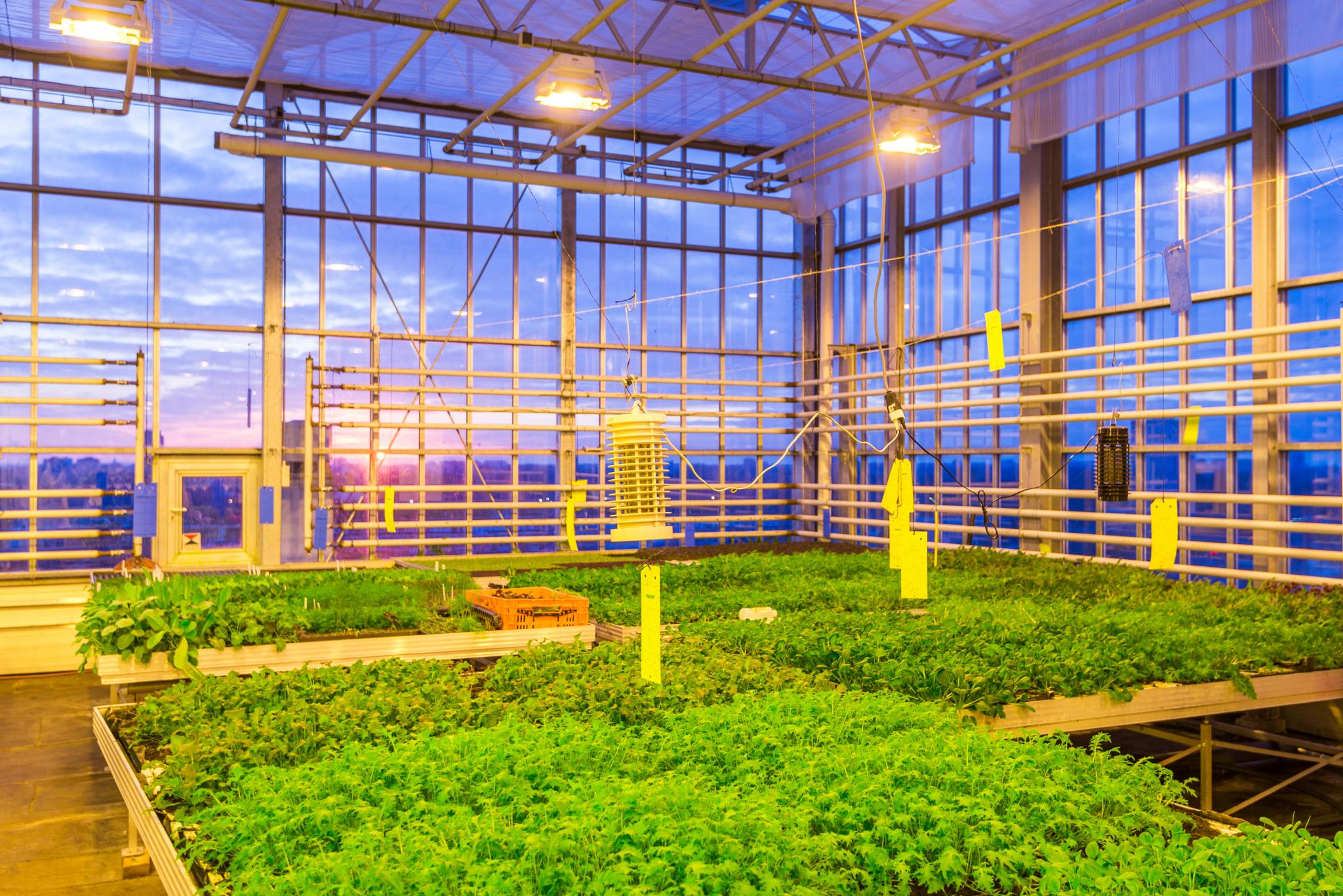 The tour allowed for first-hand insight into the urban farming of crops and fish, and it concluded with a question session. The questions and answers highlighted the positives and negatives of urban farming, evoking lively discussions from business, to technology, and which includes challenges such as the infrastructure to support the weight of an entire farm on top a building, and the accompanying bureaucratic difficulties such as obtaining licences and agricultural subsidies, because of the location. Pioneering efforts such as that of the UrbanFarmers will, however, ease these challenges for future projects centered about modular farms, which can be used anywhere in the world.
The tour allowed for first-hand insight into the urban farming of crops and fish, and it concluded with a question session. The questions and answers highlighted the positives and negatives of urban farming, evoking lively discussions from business, to technology, and which includes challenges such as the infrastructure to support the weight of an entire farm on top a building, and the accompanying bureaucratic difficulties such as obtaining licences and agricultural subsidies, because of the location. Pioneering efforts such as that of the UrbanFarmers will, however, ease these challenges for future projects centered about modular farms, which can be used anywhere in the world.
Finally, the day was rounded off with drinks, and of course a great view of the city!
Also want a tour at the UrbanFarmers? Check out: https://www.urbanfarmers.nl/
